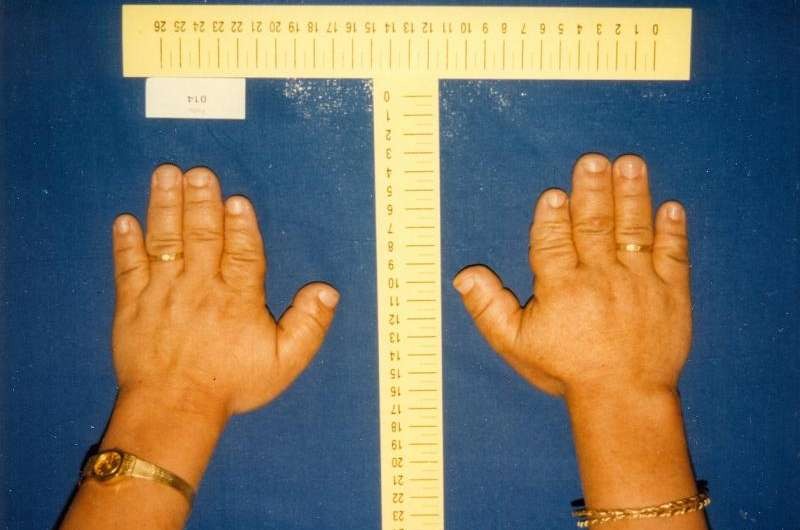
Over View
Brachydactyly is a shortening of the fingers and toes due to unusually short bones. This is an inherited condition, and in most cases does not present any problems for the person who has it. There are different types of brachydactyly, based on which bones are shortened. This condition can also be a symptom of other genetic disorders.
Symptoms of brachydactyly
The signs of brachydactyly are usually present at birth, but it’s possible that shortened limbs become more obvious with growth and development. The main symptom of brachydactyly is fingers, toes, or both that are shorter than normal. Unless you have another condition associated with brachydactyly, you should not feel any pain or have any other symptoms.
Causes of brachydactyly
Brachydactyly is an inherited condition, which makes genetics the main cause. If you have shortened fingers or toes, other members of your family most likely also have the condition. It is an autosomal dominant condition, which means you only need one parent with the gene to inherit the condition. It’s thought that two different mutations in a certain gene contribute to brachydactyly.
In some cases, it’s possible that brachydactyly is caused by exposure to medications that the mother takes during pregnancy. It may also be caused by blood flow problems to the hand and feet, especially in developing babies.
Types of brachydactyly
The different types of brachydactyly are categorized by the bones and digits affected.
Type A
Type A brachydactyly is the shortening of the middle phalanges.These are as follows:
- Type A1: The middle phalanges of all the fingers are shortened.
- Type A2: The index finger and sometimes the little finger are shortened.
- Type A3: Only the little finger is shortened.
Type B
Type B brachydactyly affects the ends of the index through little fingers. The last bone on each finger is shortened or completely missing.
Type C
Type C is rare and affects the index, middle, and little fingers.
Type D
Type D brachydactyly is considered to be common and affects only the thumbs.
Type E
Type E brachydactyly is a rare form if it is not accompanied by another disorder. It is characterized by shortened metacarpals and metatarsals.
Diagnosis of brachydactyly
A careful examination of the hands and feet by a doctor may be enough to diagnose brachydactyly. X-rays can also be used to see which bones are shortened and to diagnose the type of brachydactyly. In mild cases, an X-ray may be the only way to tell that the condition is present.
Treatment for brachydactyly
In a large majority of cases of brachydactyly, no treatment is necessary. If your condition is not a part of another syndrome, you should be healthy and will have no medical concerns related to your hands and feet.
Surgery
In extreme and very rare cases, surgery may be used to treat brachydactyly.
Plastic surgery may be used for cosmetic purposes, or in rare cases, to improve functionality. Many who need surgery will have brachydactyly along with another condition. Surgery may include an osteomy, which cuts the bone. This can contribute to “gradual lengthening”Trusted Source of the shortened fingers.